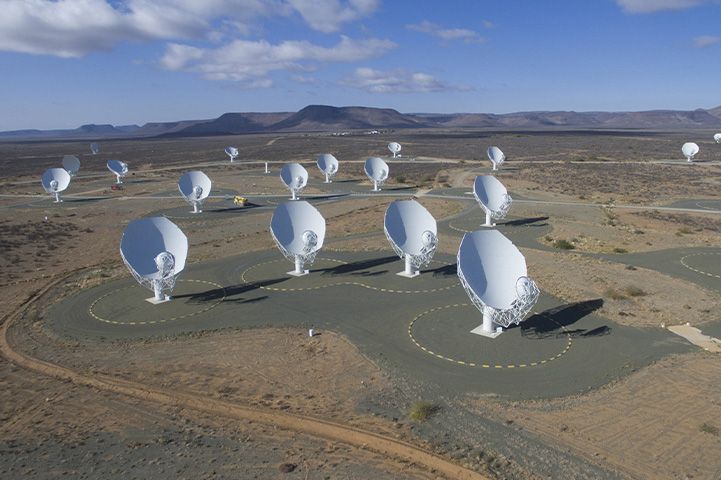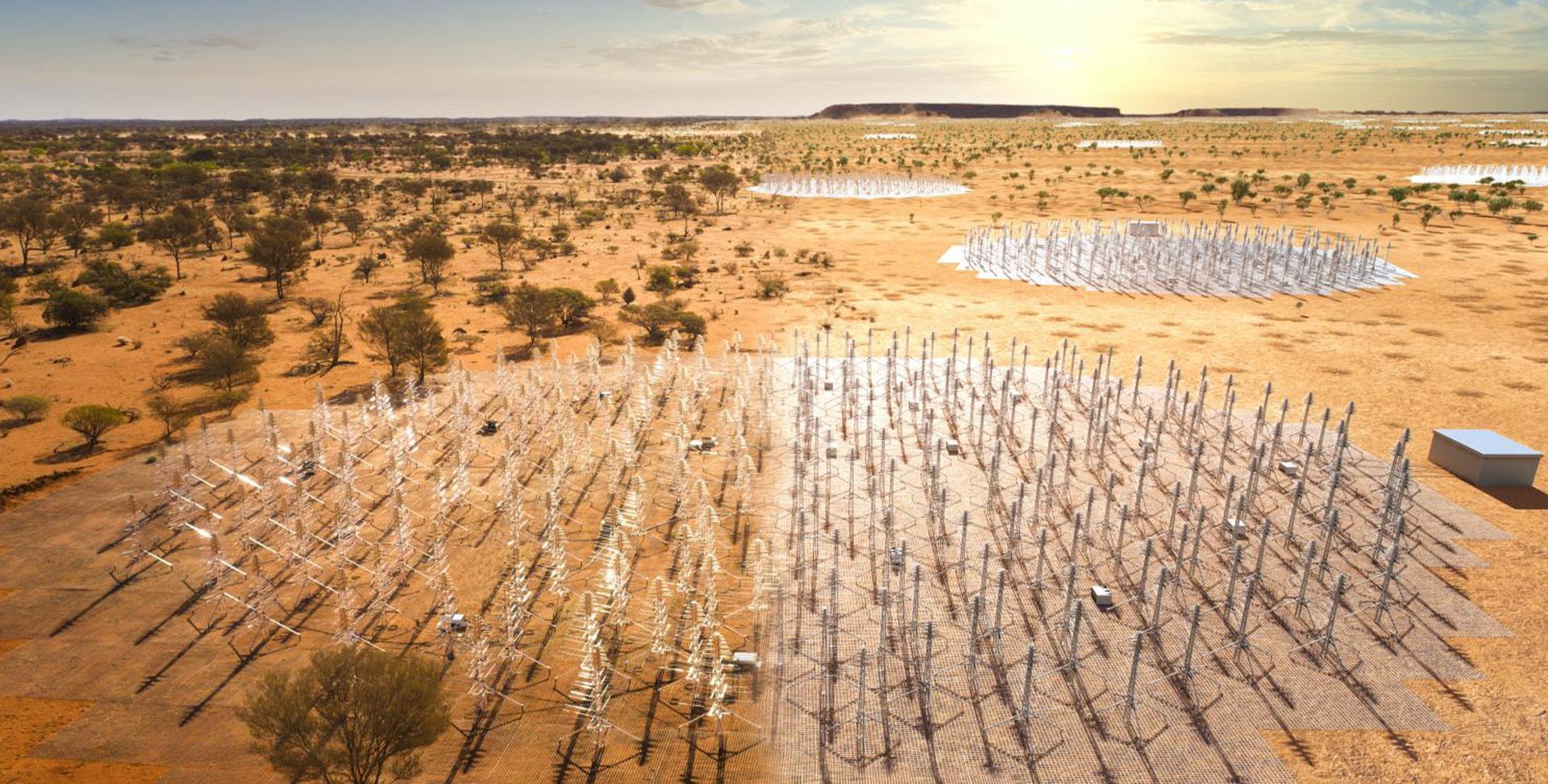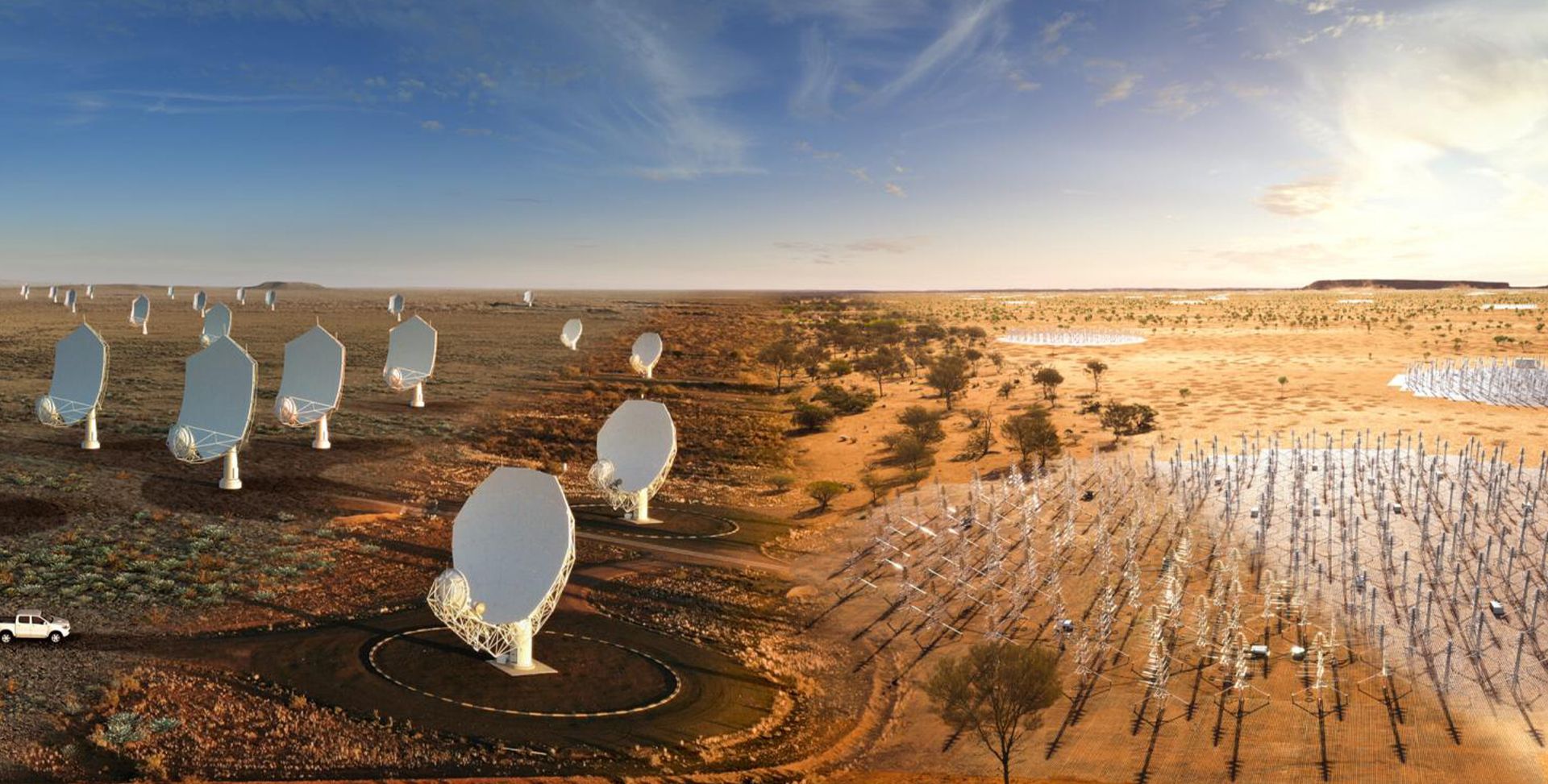SQUARE KILOMETRE ARRAY
Around 800 kilometres north of Perth, on the ancestral lands of the Wajarri Yamaji people, one of the largest science facilities on the planet is taking shape. The $3 billion Square Kilometre Array Telescope (SKA) will give humanity unimagined access to the stars and help us to better understand some of the deepest mysteries of the universe.
The international project, involving 16 participant countries, spans two continents. Australia will host SKA-Low at the CSIRO Murchison Radio-astronomy Observatory. SKA-Low will feature 131,072 antennas – each two metres tall and shaped like a Christmas tree – receiving low-frequency radio waves. South Africa will host SKA-Mid, which will be made up of 197 dish antennas receiving mid-frequency radio waves. The combining infrastructure – the Square Kilometre Array Observatory and headquarters – are located in the United Kingdom.
At a glance
- ClientCSIRO and Aurecon
- ServicesCommercial Success
- sectorInfrastructure
- LocationWestern Australia, Australia
Counting the costs to count the stars
Planning for the world’s biggest telescope has been three decades in the making and still years away from completion. As part of the Australian bid team, RLB has been involved with the SKA project since 2012. Our team was engaged by CSIRO and Aurecon to provide costs and commercial advice on the infrastructure components across a 40-kilometre radius. Picture 230 kilometres of roads and tracks, 210 kilometres of power reticulation and 650,000 square metres of ground plane mesh. These are just some of the inputs RLB’s team had to carefully cost.
This first-of-its-kind project promises to change our understanding of the universe. The scale, size and ambition are extraordinary, from the state-of-the-art technology to the complexity of construction to the 1,000-plus scientists, engineers and policymakers coming together around a shared vision. RLB is proud to play our role bringing the SKA to life.Mark Bendotti, Managing Director, RLB Perth
The remote location was chosen because of its prime purview of the Milky Way galaxy, and to protect the telescope from radio interference from electronic devices. But that same remote location makes construction a complex challenge.
The SKA’s unmatched sensitivity, resolution and scanning speed promises to spark new scientific discoveries.
The SKA’s total collecting area will span around one square kilometre – hence its name.
Operating over a wide range of frequencies, its size will make the SKA 50 times more sensitive than any other radio instrument. Once complete, it will survey the sky ten thousand times faster than our current instruments can achieve.
- 131,072
antennas
- 1000
engineers and scientists in 20 countries engaged
- $3billion
budget
A cosmic citadel made with modern construction methods
The unique Central Processing Facility is being constructed to protect the radio quiet environment at the remote site. The design – developed by Aurecon and CSIRO – includes a fully welded, double shielded steel enclosure to prevent signals from inside the building from interfering with the sensitive receiving antennas outside. The pre-fabricated building will be transported to site in modules – a solution that maintains labour costs within budget and minimises quality risks inherent in remote building construction.
CSIRO has given the site a traditional name, Inyarrimanha Ilgari Bundara, which means sharing sky and stars in Wajarri language. Each aspect of the project is being undertaken with respect for Country. Cleared areas are being kept to a minimum, and existing tracks or previous routes retained to minimise disturbance to vegetation. Wajarri Elders, heritage experts, archaeologists, ethnologists and more have walked across more 400 kilometres of land to exclude sites of cultural significance.
Unravelling the universe
The SKA telescopes will generate million billion bits of data each second – more than the global internet rate today. The data from the SKA-Low antennas will flow to a custom processing facility , before being transferred by fibre-optic cable to the Pawsey Supercomputing Research Centre in Perth – another project RLB helped to deliver – for further processing and imaging. The project is set for completion in 2028. After that, the sky is no longer the limit.

FURTHER INFORMATION:




